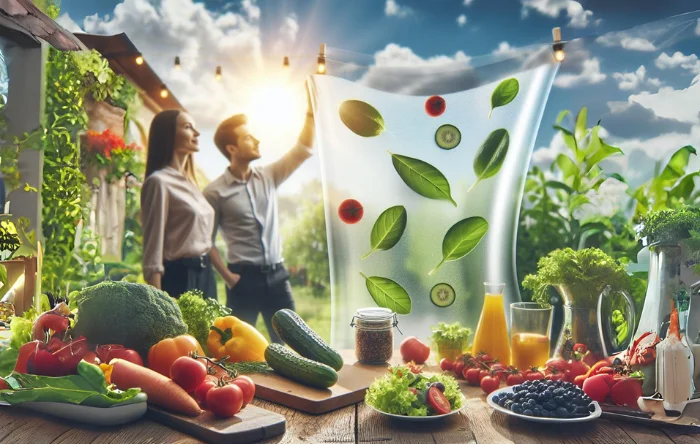In a world grappling with the challenges of food security and environmental sustainability, a groundbreaking innovation emerges: an ultrathin crystal film, barely thicker than a human hair, capable of keeping crops warm during cold nights without using any electricity.
This remarkable technological feat, developed by a team of Chinese researchers, harnesses the ambient warmth in the atmosphere to increase ground temperatures by nearly 5°C, offering a ray of hope to farmers worldwide.
In agriculture, frost is a formidable enemy. Estimates indicate that frost destroys between 5 and 15% of global crop production annually. Traditional methods to combat this, like plastic sheeting, heaters, and insulating blankets, are either energy-intensive or inefficient.
But this new film, composed of germanium and zinc-sulfide crystals, changes the game. These materials possess nanophotonic properties, enabling them to interact with light in ways that can trap heat effectively.
At just 4.12 microns thick, this film ingeniously reflects heat-trapping wavelengths (8 to 14 micrometers) back towards the ground while absorbing other wavelengths (5 to 8, and 14 to 16 micrometers) from the surrounding atmosphere, creating a warming effect.
In field tests, the film outperformed existing alternatives, maintaining temperatures up to 4.4°C warmer. This efficiency isn’t just theoretical; it has practical implications for crop protection and food waste reduction.
From an economic and environmental standpoint, the benefits are significant. By reducing crop losses due to frost, farmers can ensure a more stable food supply, potentially reducing the need for expensive and energy-consuming heating methods.
More To Discover
- New Swedish ‘Electric Soil’ Boosts Barley Growth by 50% in 15 Days
- Solar-Powered Fridge Tackles Energy Inefficiency and Power Outages
- Sustainable Air Purifier Outperforms House Plants by 70X with Mini-Forest Technology
- Using Space as An Excuse? Why Anyone Can Compost Even in a Small Apartment or Balcony
The film’s ability to passively maintain warmer temperatures could lead to substantial energy savings, reducing the carbon footprint associated with agricultural practices.
Consider this: if the film’s use becomes widespread, the potential energy savings and reduction in food waste could be monumental.
For instance, if even a fraction of the global crop losses due to frost, which amounts to billions of dollars annually, can be prevented, the financial benefits to farmers and consumers alike would be substantial. Moreover, reducing food waste contributes significantly to environmental conservation, as wasted food entails not just loss of produce but also of the resources used in its production.
The researchers themselves have high hopes for this invention, believing it, “heralds a promising approach to energy conservation in diverse scenarios,” and see it as a step towards achieving carbon neutrality. As we march into a future where sustainable farming and environmental stewardship are paramount, this film could play a pivotal role in shaping a more resilient and efficient agricultural landscape.




















